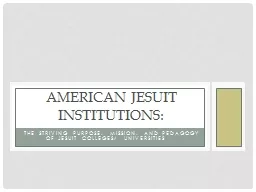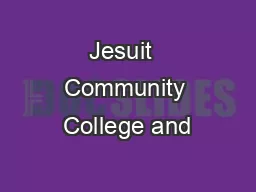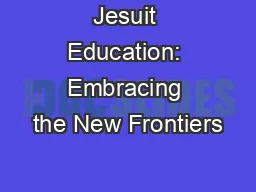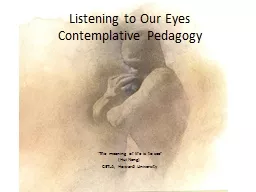PPT-The striving purpose, mission, and pedagogy of Jesuit Colle
Author : min-jolicoeur | Published Date : 2017-10-15
American Jesuit Institutions Thesis Jesuit institutions for higher education were developed upon the workings and passion of St Ignatius of Loyola utilizing St Ignatius
Presentation Embed Code
Download Presentation
Download Presentation The PPT/PDF document "The striving purpose, mission, and pedag..." is the property of its rightful owner. Permission is granted to download and print the materials on this website for personal, non-commercial use only, and to display it on your personal computer provided you do not modify the materials and that you retain all copyright notices contained in the materials. By downloading content from our website, you accept the terms of this agreement.
The striving purpose, mission, and pedagogy of Jesuit Colle: Transcript
Download Rules Of Document
"The striving purpose, mission, and pedagogy of Jesuit Colle"The content belongs to its owner. You may download and print it for personal use, without modification, and keep all copyright notices. By downloading, you agree to these terms.
Related Documents














